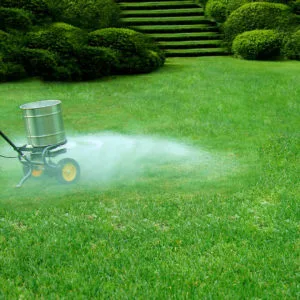Certain times of the year are better for certain lawn maintenance practices. Now that it’s finally fall, fertilizing your lawn should be on your to-do list. Learn more about how and why.
Why Fertilize in the Fall
The weather is getting colder, so lawns are starting to go dormant, but it’s not sleeping yet. In fact, fall is the best time to fertilize your lawn. Why?
- The weather is not as stressful as the harsh summer heat and frozen winter ground.
- Chilly morning dew adds moisture to the turf to help absorb fertilizer better.
- There’s still time to build-up defenses before winter sets in.
- Roots are strengthened underneath the surface, resulting in a lusher lawn come spring.
Fall fertilizing is more involved than simply dusting your grass with organic matter. Learn the proper fertilizing techniques to get the most out of this ideal time of year.
Fall Fertilizing Techniques
Before you apply any fertilizer, you have a little research to do. Find out when the first frost is forecasted for your area. You’ll want some time in between for the fertilizer to absorb into the soil. Once you find the date—which should be around mid-October—schedule fertilizing about two to three weeks before it.
Once you’re ready to fertilize, here’s how;
- Check the forecast. Pick a dry day for fertilizing. If it just rained or will rain soon, pick another day to limit the amount of runoff.
- Mow your lawn right before you fertilize and leave some grass clippings to act as another natural component.
- Fertilize in the morning or early evening when it’s not as warm.
For more fall lawn maintenance tips and the best products to use for your particular lawn, contact [company] today—or at least three weeks before the first frost.



Comments (0)
Thanks for your comment!
Thanks for your feedback! Your comments have been successfully submitted! Please note, all comments require admin approval prior to display.
Error submitting comment!
There is a problem with your comment, please see below and try again.